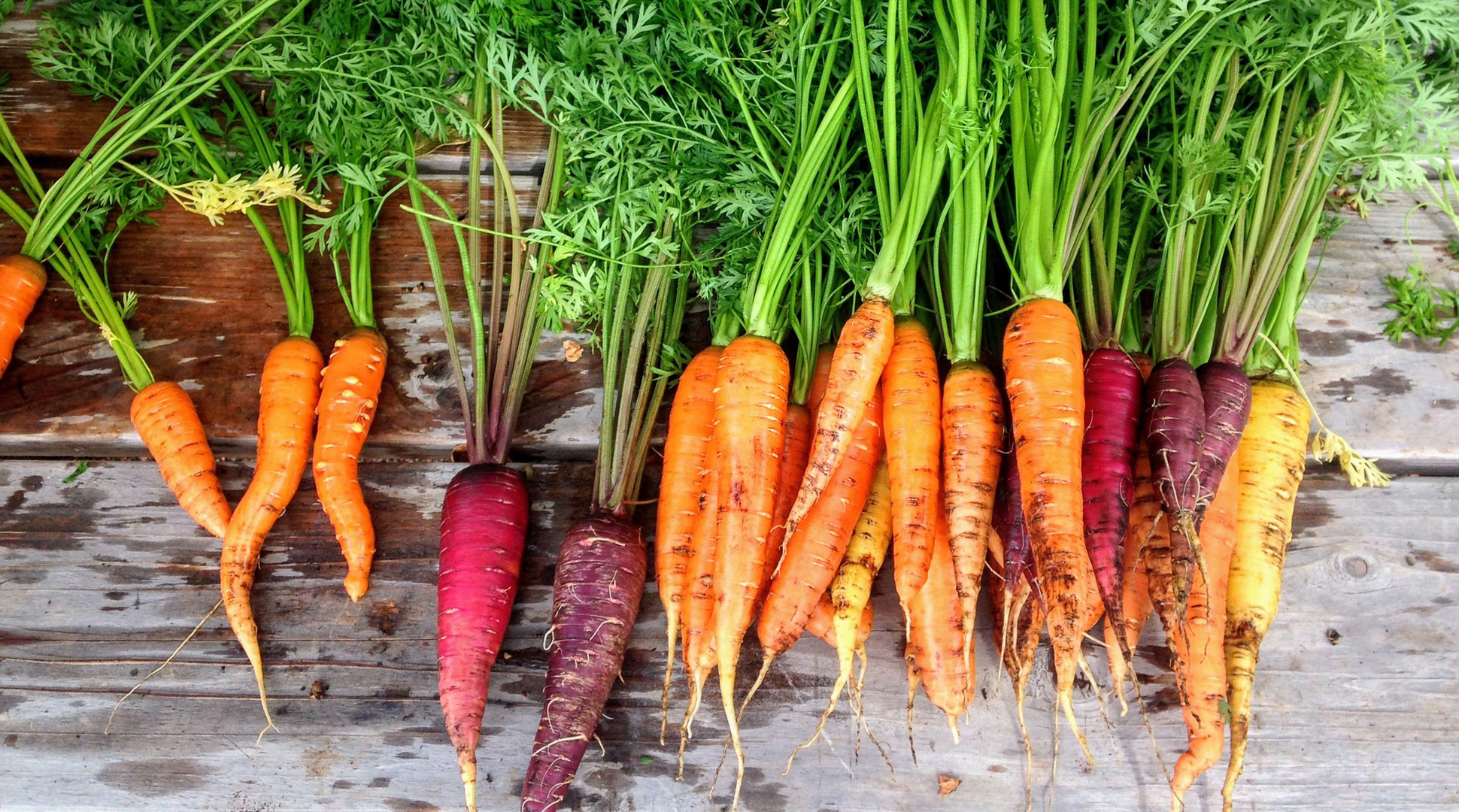Photo by ShireShy on Pixabay
by Julie Garden-Robinson, LRD
Whenever I see carrots, I think of a friend of mine. I was a graduate student and she was a technician.
Back in those days, you could smoke cigarettes in the hallways and offices on campus. During breaks, she would smoke cigarettes, and we’d visit in the hallway. I think I breathed a fair amount of secondhand smoke.
Fortunately for her (and me), she decided to quit smoking. She ate a carrot every time she felt the urge to smoke. Eating carrots helped keep her hands and mouth busy. I think we nicknamed her “Bugs Bunny” because she often had a carrot with the green tops attached.
I estimate she ate at least 10 full-size carrots at work and probably more at home. I certainly promote eating more vegetables, but this was carrot-overload.
Before too long, we all noticed the palms of her hands were orange. Soon, her face and arms took on an orange-colored hue.
The condition is called “carotenemia,” a skin discoloration that can develop after a few weeks of robust eating of beta-carotene rich foods. Beta-carotene is the pigment found in carrots, pumpkin, squash, sweet potatoes and other vegetables and fruits.
Sometimes infants can turn an orangey color if they are fed too much beta-carotene foods.
The good news is that carotenemia is not dangerous and will resolve itself when “Bugs Bunny” switches to eating a more balanced, varied diet. My friend switched to chewing gum instead of chomping on carrots, and her skin returned to its usual color.
Carrots are nutritious and popular. They are the sixth most popularly consumed vegetable in the U.S. according to the Agricultural Marketing Service. One medium-sized carrot (about 7 inches) has 35 calories and 2 grams (g) fiber, including the type of fiber that may help maintain a healthful blood cholesterol level.
Carrots are notable sources of beta-carotene, which the human body converts to vitamin A, which promotes healthy skin and eyes. Vitamin A helps prevent a condition called “night blindness.” If you experience difficulty seeing at night, discuss this with your healthcare provider.
Enjoying plenty of beta-carotene-rich foods certainly won’t hurt you. Most of us shortchange ourselves on dark-orange fruits and vegetables.
I find harvesting carrots to be a fun activity, especially if I plant multicolored carrots. What’s under that foliage? Purple and red carrots are high in anthocyanin, a pigment that acts as a cancer-fighting antioxidant.
After harvesting, cut about half of an inch from the top of each carrot, removing the greens. Growing up, we raised a lot of carrots and simply removed the excess soil, trimmed the tops and kept them bagged in an extra refrigerator. We had fresh carrots available until springtime.
If you raise small amounts of carrots, cut off the tops, rinse and air-dry them for storage in an air-tight plastic bag in the refrigerator to maintain proper humidity. If the carrots are not in air-tight bags, they may go limp in the refrigerator. Carrots will maintain their freshness longer at or around 32 F.
Carrots are readily available in grocery stores all year. “Baby cut carrots” were introduced in 1986 and result from trimming larger carrots into uniform small carrots. We see them on appetizer trays and in lunch boxes.
We often call the bags of small carrots “baby carrots,” but technically, “baby carrots” are immature carrots.
Carrots can be cooked in the oven, microwave, on the stove top or in a slow cooker.
Cut larger carrots into strips or smaller coin shapes depending on the cooking plan. Toss carrots in olive oil, salt, pepper and other seasonings for added flavor. Garlic, balsamic vinegar, butter, brown sugar, honey, maple syrup, lemon zest, chives, green onions and chili powder are good accompaniments to carrots.
Carrots can be preserved by freezing, pressure-canning, pickling or dehydrating.
See www.ag.ndsu.edu/food and check out the “Food Preservation” information. Follow current pressure-canning procedures in the NDSU Extension publication “Home Canning Low-acid Vegetables” (FN173). See “Freezing Vegetables” (FN187) and “Making Pickled Products” (FN189) for additional information about preserving carrots.
Julie Garden-Robinson, Ph.D., R.D., L.R.D., is a North Dakota State University Extension food and nutrition specialist and professor in the Department of Health, Nutrition and Exercise Sciences. Follow her on Twitter @jgardenrobinson
